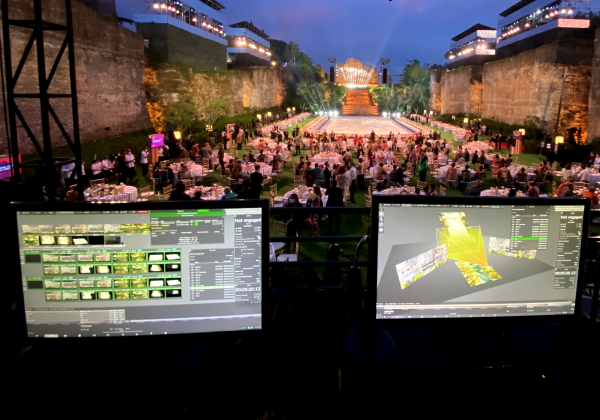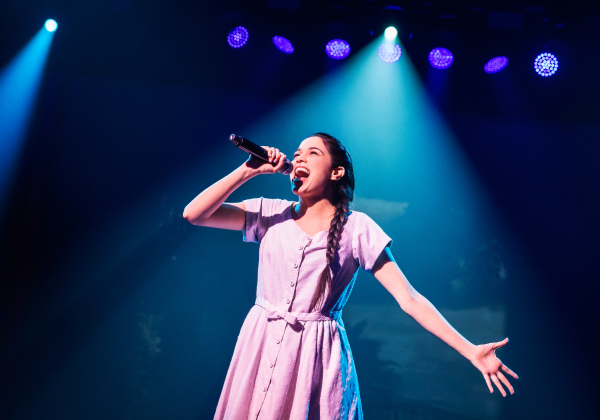
case study 2017 6 min read
U2 'The Joshua Tree' Tour
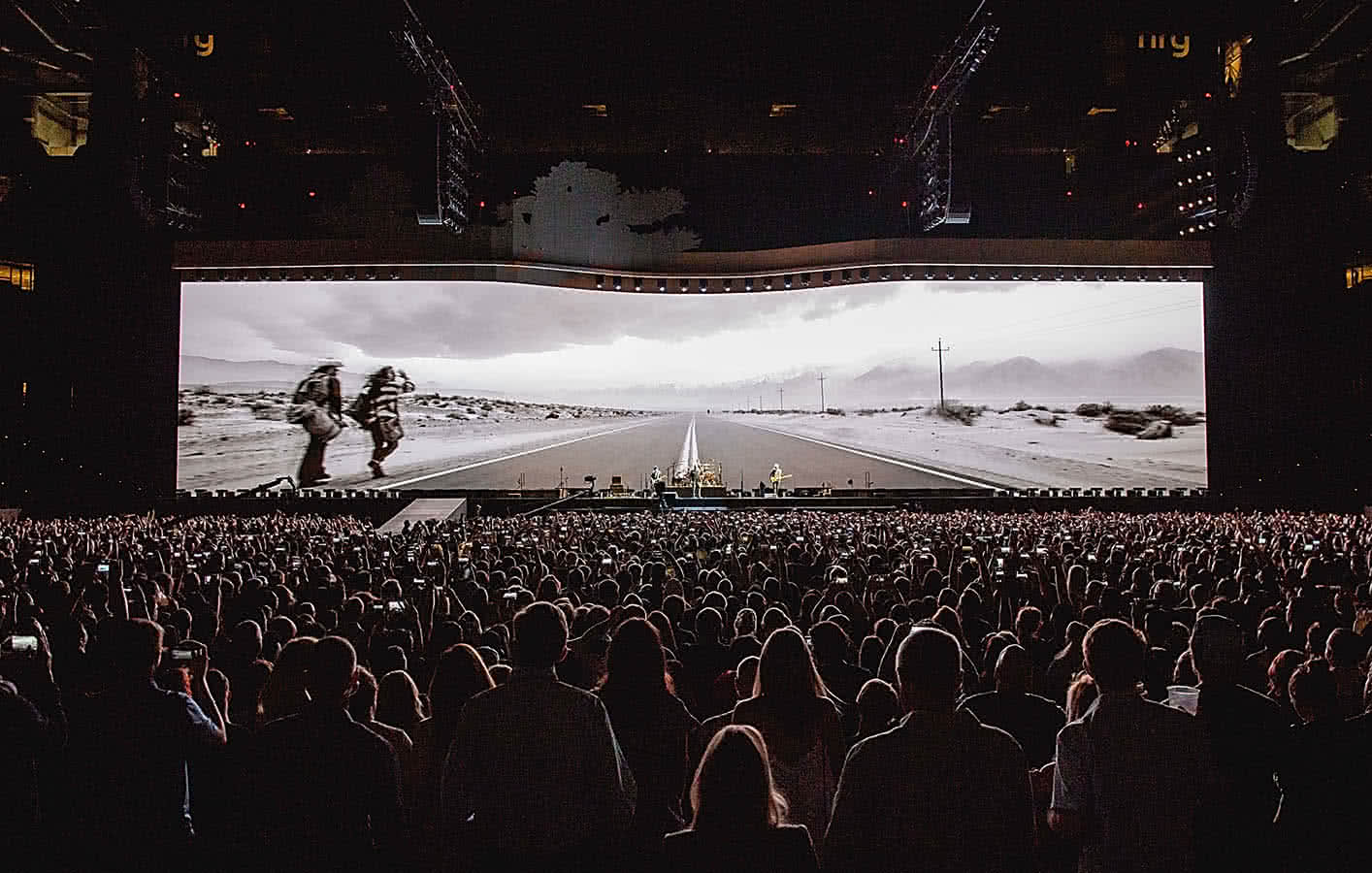
U2's latest tour, built around their classic album 'The Joshua Tree', used a 200ft wide and 45ft high LED video screen as the focus of its creative masterpiece - with all content handled by the gx 2.
Last fall, when the members of U2 were talking about another tour, the plan was to support its in-the-works album, 'Songs of Experience'. Then the unexpected result of the US election last November made them rethink their strategy. In a widely quoted Rolling Stone interview, The Edge, U2’s lead guitarist, said, “We just went, Hold on a second— we’ve got to give ourselves a moment to think about this record and about how it relates to what’s going on in the world.” Although work continued on 'Songs of Experience', which remains unreleased, the band members took note of the 30th anniversary of U2’s breakthrough album, 'The Joshua Tree'. Recorded during the Reagan/Thatcher era, it seemed to them to be the perfect fit for the social and political climate of 2017. Thus was born the current Joshua Tree Tour, which among other things, features the entire set list from that album.
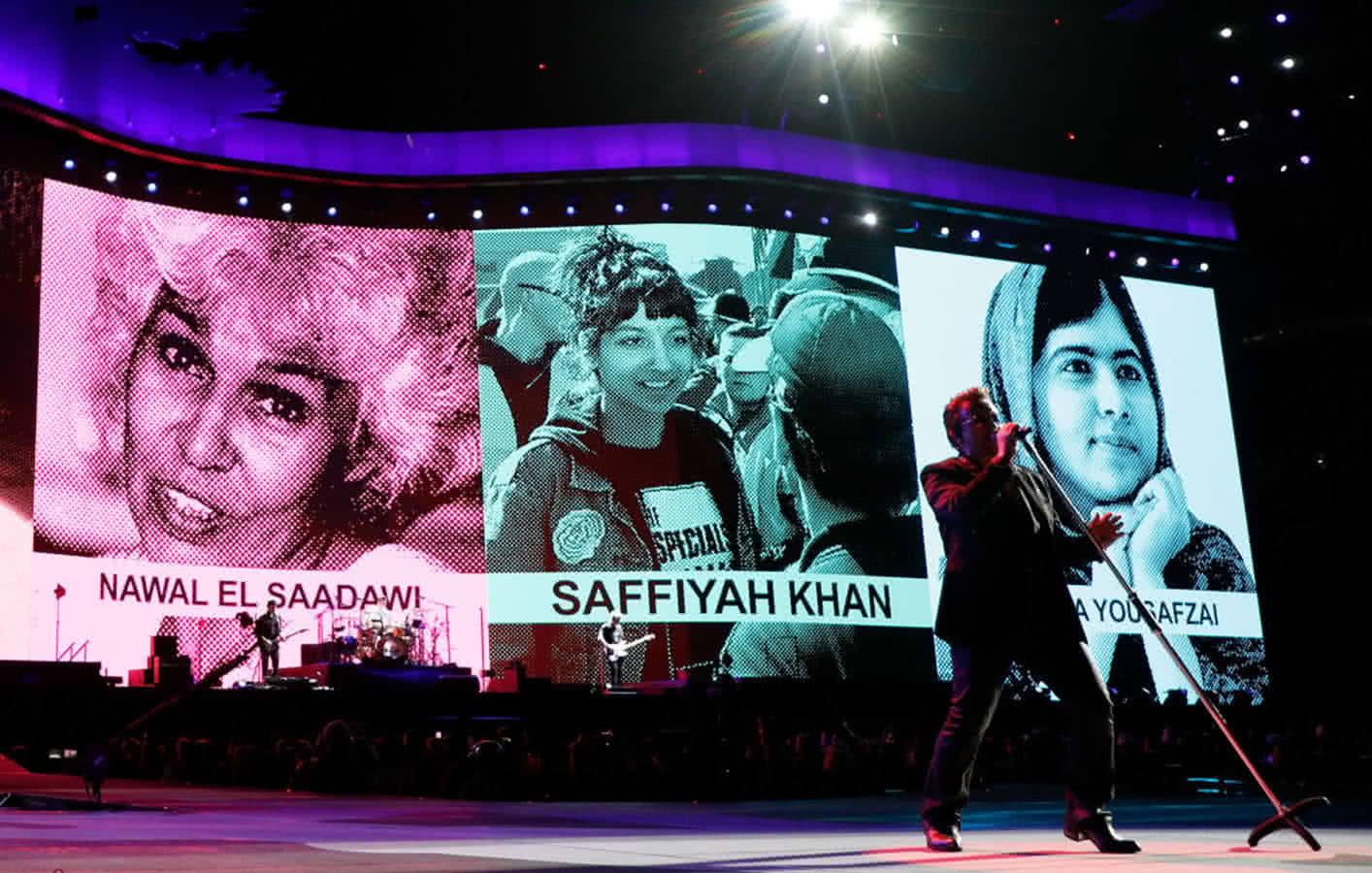
As plans were being laid for the tour, U2's longtime creative director, Willie Williams, and the scenic design team at London-based Stufish Entertainment Architects, led by Ric Lipson, were involved in a corporate show; “Salesforce, a corporate company, had an event in San Francisco called Dreamforce,” Lipson says. “We were doing a one-night show for Dreamforce. We put together a production loosely based on the concept of a drive-in movie theatre, because the site of the event, The Cow Palace, used to have [such a venue]. The design of the Salesforce show was a big slab of video, top and tail with lights, and a basic PA system. We suddenly realised that this was a really beautiful thing, which we knew, because we had a big video screen for the Innocence + Experience Tour in 2015.” The idea resonated, and the design team decided on a 200' curved LED wall comprised of ROE Visual CB8 8mm tiles, which was provided, along with the rest of the tour's video gear, by the Los Angeles office of PRG Nocturne.
“It was obvious from day one that Anton Corbijn [who took the photos for the original Joshua Tree album] should make the films for 'The Joshua Tree' portion of the show— it’s his aesthetic and he found the damn tree, after all,” Williams says. “In Act III, there’s a film by the French artist JR about Syria [for the song 'Miss Sarajevo'] and a couple more things made by me and my usual team, which includes Sam Pattinson, at The Third Company, and Ben Nicholson, at Empirical Studio.”
Video director Stefaan 'Smasher' Desmedt says, “I spent two months configuring 'The Joshua Tree’s' video system with the guys from PRG Nocturne, so that it would be actually tourable. It’s not just a normal, conventional video system.” The combination of its extreme width and 8mm resolution poses many challenges, he notes: “A lot of people make a mistake—they end up with this super high resolution screen, but there’s no money for the back end, like cameras and visuals. If you shot this in just HD, you would have to stretch the image four times, and by then you’d be able to play chess on it, since it would look so digitized and ugly. There are not many tours that are taking 4K, because you don’t need it—but we needed it because of the resolution of the screen.”
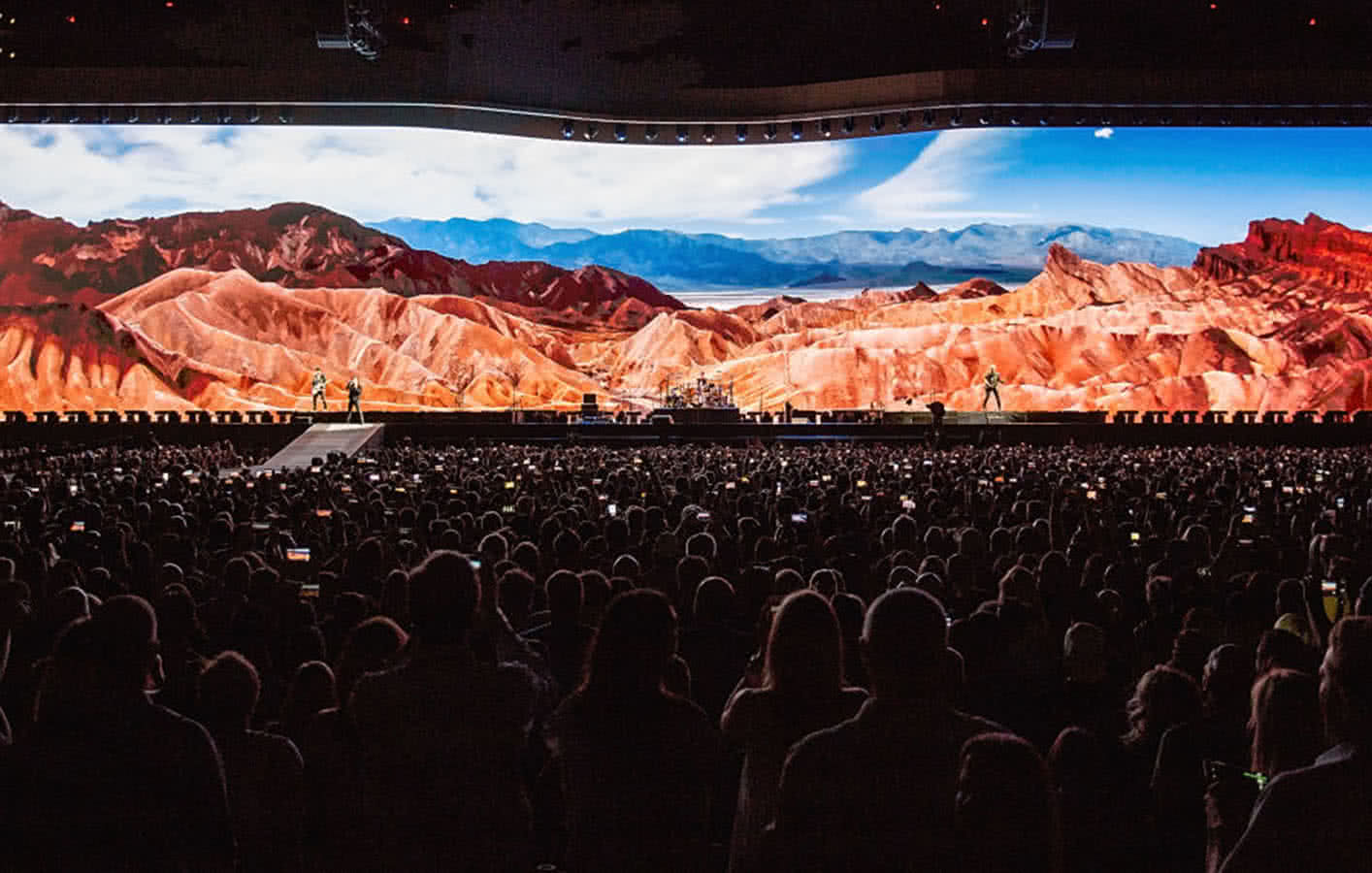
It was pretty hard to get the package together, You can do 4K, but then your server needs to do 4K as well, and that was the biggest problem. The reason, again, is because none of the servers out there can input 4K signals yet. Well, technically, they can, but you have a latency of six frames, which is too much for what I do out here. I went to Ash Nehru [director of disguise]. He’s a good friend of mine, and has supported me for the last 12 years on all the U2 shows; I wouldn’t go out without his system.”
Video director - Stefaan 'Smasher' Desmedt

“I’ve always been the test pilot for using disguise; I’ve always had prototypes and I try to push the limits in regard to technology. That’s why I use disguise.”
Video director - Stefaan 'Smasher' Desmedt
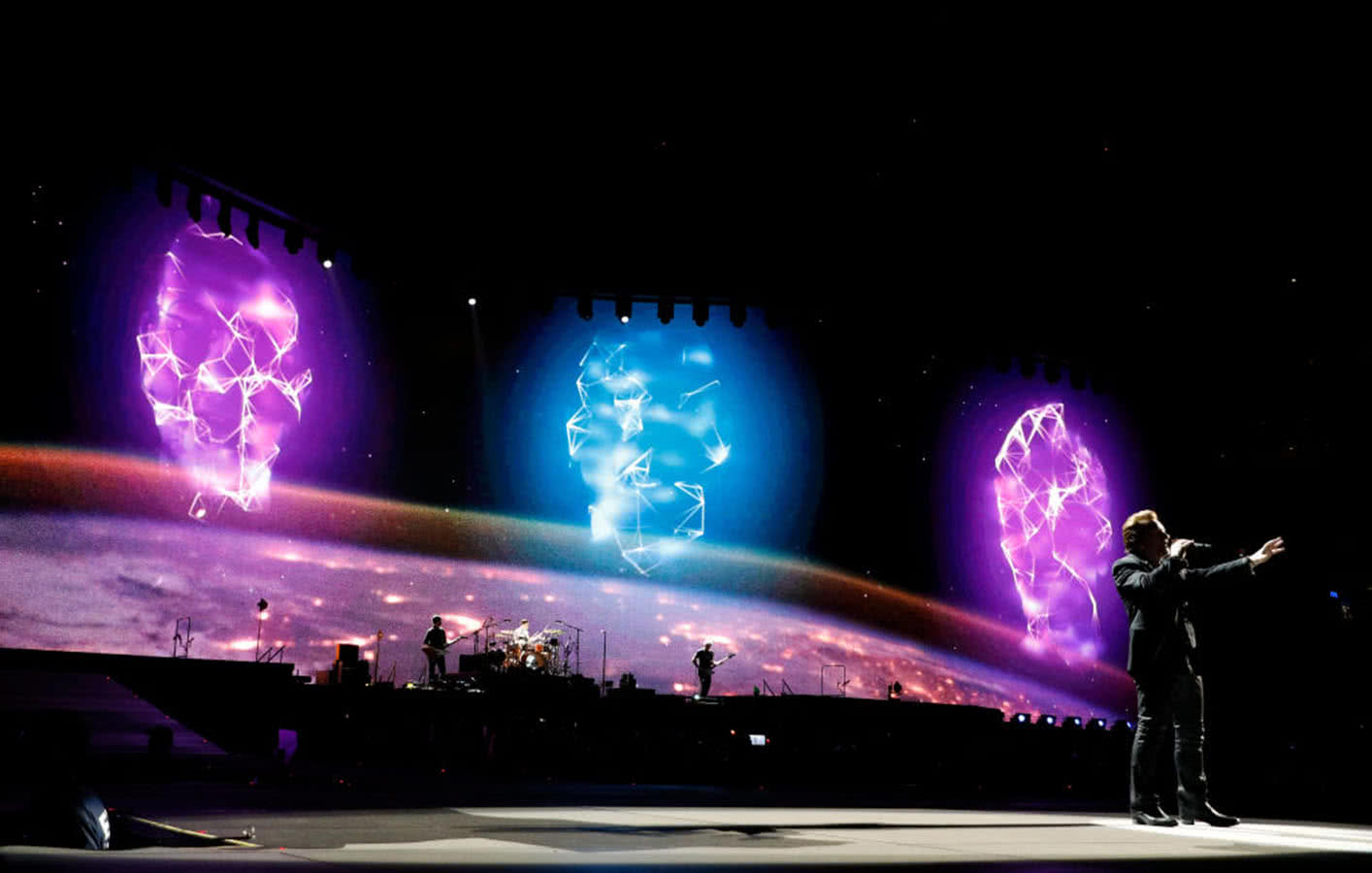
Working with the gx 2 is Notch, the popular programme that combines live imagery and video content with minimal latency. Smasher has been using it since he first saw it, in demo form, two-and-a-half years ago. “In many ways, Notch is an empty box that you can use to create amazing things,” he says. Here, Notch was used to add texturing to the IMAG, plus to add unique visual effects during a number of songs. For Bullet the Blue Sky, a high contrast and heavily effected black and white look with triggerable particle wind gust and flash effects was implemented via Notch; whilst for Exit a triggerable delay effect was used, also in high contrast black and white with some additional glow and masking effects. Notch was also used for Ultraviolet to create live, halftone and colourization effects to match rendered content around the IMAG feed, and for Beautiful Day to create some rendered, glowing and floating ‘cyborg heads’ for the bridge of the song.
Smasher adds, “All the footage was shot in 8K as well, because of the resolution of the screen. Anton Corbijn changed his cameras around as he was shooting, and the result is just amazing.” For live imagery, there are eight Grass Valley [a Beldon brand] 4K LDX Series manned cameras, as well as six unmanned cameras. Unlike many directors, Smasher is located at the front of house during the show.
“When I’m directing, it’s so much easier to follow the show and get the energy of it, as opposed to staying backstage,” he admits. He’s on tour with two system engineers: “Once you take that kind of risk, you have to make sure you have the support as well. The guys worked extremely hard for me to get this thing going, and it was a big risk.”
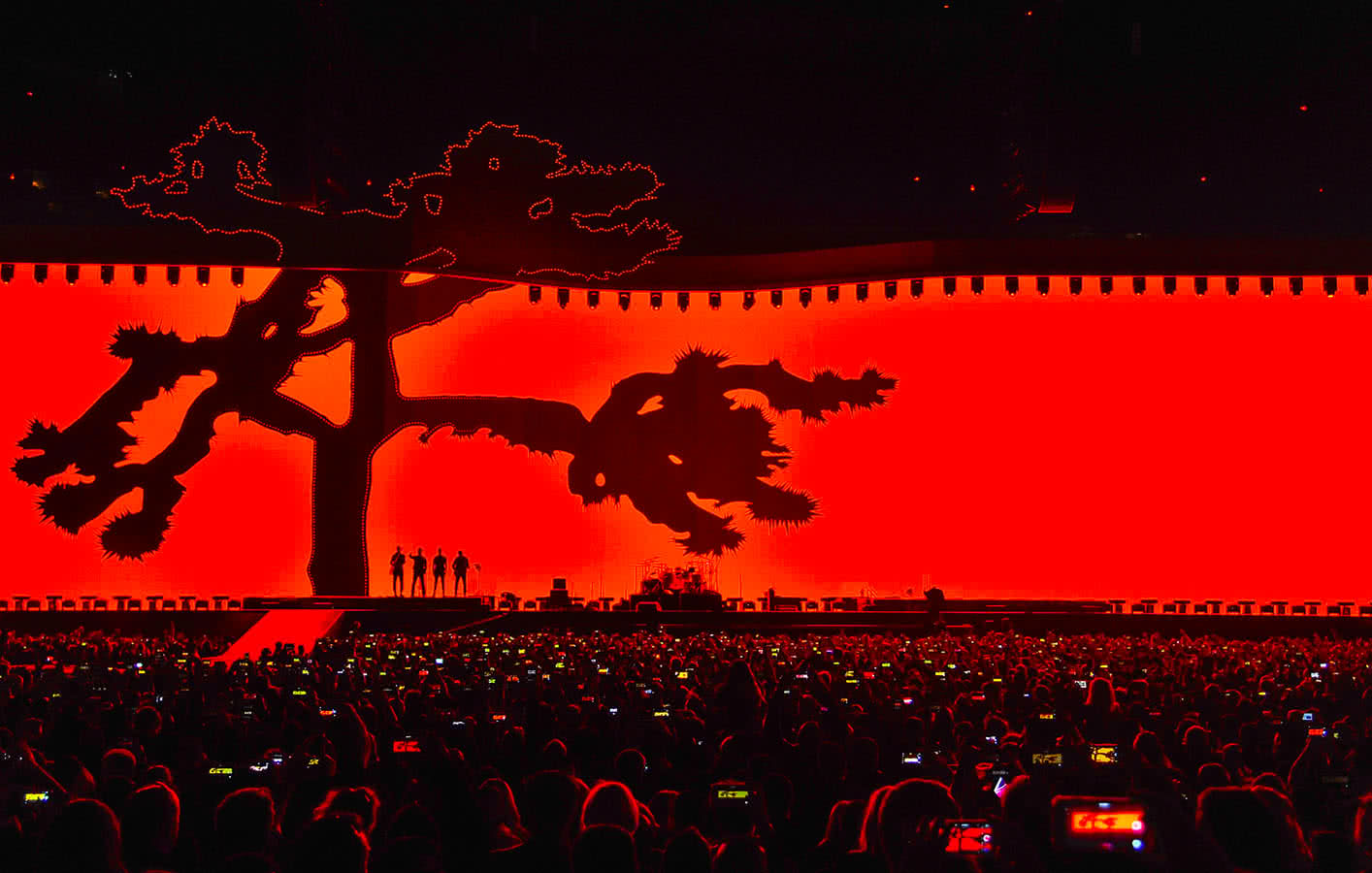
Equipment
- Designer
- Find out more
- gx 2
- Find out more

